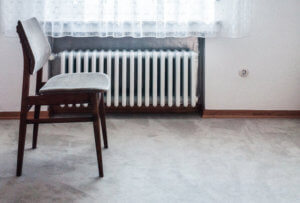
Like carpet comes in many colors, shapes and sizes, so, too does mold, and our fungal foe thrives off the woven fabric that provides warmth, comfort and a final finish to the room it adorns. Yet it can be difficult to detect carpet mold as it flourishes beneath the surface. So, what can be done about it? Here’s all you need to know:
Signs
- Odors, specifically of the musty kind, is a number one tell-tale sign that you may have carpet mold. It might not be immediately apparent to you, if you are surrounded by it every day, but take note if any visitors pass comment.
- Health problems. Carpet mold – like every other mold – can cause allergies, breathing difficulties, itchy eyes and skin, coughing and sneezing, asthma and even severe lung complications, such as bronchitis – among other things.
- Mold will grow in any environment that remains wet for more than 24 hours. If you notice damp on your carpet, you’ll probably find mold lurking somewhere, too.
- Visible growth. Whether it’s a spot of green, white or black you can see on your carpet, it’s a definitive sign that mold has very much made itself at home.
- Mold testing kit. This will test the airflow across a carpet and is one of the most reliable methods of confirming the presence of mold.
Steps
So, you’ve found mold in your carpet. Now what?
If you plan to go DIY …
- Make sure your mouth, eyes and hands are fully protected with masks, rubber gloves and goggles.
- Ensure all other doors are closed so that no mold spores make their way into neighboring rooms. Keep the windows in the affected room open for adequate ventilation.
- Use a stiff rubbing brush and dish washing detergent mixed with water to dislodge the mold, vacuum and then deep-clean the area with a steam cleaning machine. If the mold needs something more aggressive, there is a wide range of products on the market to help (household bleach continues to divide opinion!).
- Treat the floor itself with an anti-fungal solution, too. Remember to always test a small patch before using something aggressive.
- Dry the carpet completely – ensuring you have an adequate air ventilation system, such as a dehumidifier, and open windows to eliminate all the moisture out of the carpet. Overhead lights should also be left on. Avoid using a fan as this can scatter any remaining mold spores.
- To eliminate the odor of carpet mold, Dean Davies, Professional Cleaning Technician at Fantastic Services, advises to “combine a cup of vinegar with two cups of lukewarm water … spray the affected area” and let sit for three to five minutes, before scrubbing “the solution into the fibres. Finally, sprinkle a bit of baking soda over the affected zones, leave it for a day, and then thoroughly vacuum the baking soda residue.”
As ever, in more serious cases, you should always call in a mold remediation expert, who may advise you to replace the padding and/or carpet itself. If aesthetics is not an issue, another option may be to replace the affected area of carpet with something similar. If you do choose to replace the carpet, put it in a sealed plastic bag so that it doesn’t contaminate anything else – along with any safety gear used to tackle to problem.
Prevention
- Sensible installation. No, carpeting your basement or bathroom is not a smart idea!
- Stay synthetic. Organic materials are more prone to mold growth than their man-made counterparts, so choose nylon over wool.
- High quality padding. Rubber carpet padding with anti-microbial properties is available at a slightly higher cost – worth every dime in our opinion!
- Regular inspection – lifting the carpet and thoroughly examining the floor and carpet underneath is the only way to rule it out for good.
- Dry wet patches immediately – however small.
- Keeping on top of the ventilation in the room whilst reducing indoor humidity (between 30-60%) is best practice for keeping mold at bay. High temperatures can also be a contributing factor, so install air conditioning to kill two birds with one stone.
- Clean carpets. Studies have found that when it comes to carpet mold, dirt may be a bigger contributing factor than moisture. This is for two reasons: 1. Because dirt itself contains mold spores and 2: Dirt is a hygroscopic material, meaning it readily soaks up any available moisture. Keeping your carpets clean, therefore, is not only a must for aesthetic reasons but for the fight against mold, too. According to Dean, you should vacuum you carpet regularly and steam clean at least twice a year, as it “ensures a high enough temperature to kill any toxins and suck up the dead mold spores.”
from Mold Blogger https://moldblogger.com/carpet-mold/
Mold Remediation Baltimore
No comments:
Post a Comment